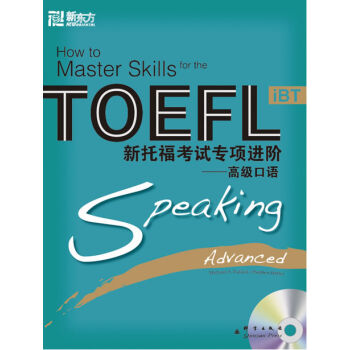

具体描述
产品特色
编辑推荐
How to Master Skills for the TOEFL iBT Writing Intermediate is designed to beused either as a textbook for a TOEFL iBT writing preparation course or as a tool for individuallearners who are preparing for the TOEFL test on their own. With a total of 16 units note-taking outlining paraphrasing and summarizing practiceA list of essay topics reconstructed from the ones that have so far been asked on the TOEF L iBT
Two complete tests that familiarize students with the actual test format
Full answer key and Chinese translations
内容简介
《新托福考试专项进阶:高级口语》从托福考试所考查的听、说、读、写四项技能入手,为考生提供了详尽的考试指导,并将各技能分为初、中、高三级,通过独特的“进阶训练”方式,再辅以大量练习,让考生逐步掌握托福实考的技巧,同时切实提高英语实际运用能力,从而在短期内轻松取得托福高分。本丛书内容编排由易到难,循序渐进,实战性强,是不可多得的托福备考资料。 本丛书引进自韩国多乐园出版社。该社成立于1977年,在韩国英语教育出版领域始终处于领军地位。本丛书被韩国众多学校和培训机构指定为课堂教材,在托福考生中享有较高声誉。作者简介
Michael A.Putlack,美国塔夫茨大学历史学硕士。TOEFL、TOEIC和TEPS考试测试研发方面经验丰富。
Stephen Poirier,加拿大西安大略大学历史学在读博士生,获得卡尔顿大学Professional Technical Writing证书。
目录
IntroductionHow to Use This Book
PART 1 Independent Speaking
Chapter 1 Personal Experience
Unit 1 Needing Help
Unit 2 Subjects
Unit 3 Life Changes
Unit 4 Home Characteristics
Unit 5 Celebrations
Unit 6 Gifts
Unit 7 News
Unit 8 Challenging Experiences
Unit 9 Living Environment
Unit 10 Skills
Chapter 2 Personal Preference
Unit 11 Cell Phones
Unit 12 College Housing Arrangements
Unit 13 Part-time Jobs
Unit 14 Life after High School
Unit 15 Measures of Success
Unit 16 Kinds of Books
Unit 17 Films & Concerts
Unit 18 Summer Vacation Activities
Unit 19 Comfort in Different Generations
Unit 20 Life Lessons
PART 2 Integrated Speaking I
Chapter 3 Reading & Conversation
Unit 21 School Facilities 56
Unit 22 Dormitory Policies I
Unit 23 Class Size Increases
Unit 24 School Policies 65
Unit 25 Night Classes 68
Unit 26 Dormitory Policies II
Unit 27 Student Affairs 74
Unit 28 Library Renovations
Unit 29 Online Library Materials
Unit 30 Parking Policies
Chapter 4 Reading & Lecture
Unit 31 Shaping
Unit 32 Memorization
Unit 33 Cyclic Population Change
Unit 34 Short-term Memories
Unit 35 Scent Marketing
Unit 36 Fixed Action Patterns
Unit 37 Creative Categorization
Unit 38 Process Explanation
Unit 39 Competence Stages
Unit 40 Paradoxes of Choice
PART 3 Integrated Speaking II
Chapter 5 Conversation
Unit 41 Student Life I
Unit 42 Internships
Unit 43 Student Activities
Unit 44 Living Situations
Unit 45 Changing Classes
Unit 46 Extracurricular Activities I
Unit 47 Student Life II
Unit 48 Student Advisors
Unit 49 Extracurricular Activities II
Unit 50 Residential Life
Chapter 6 Lecture
Unit 51 Defensive Adaptations
Unit 52 Name Recognition
Unit 53 Art Methods
Unit 54 Animal Cooperation
Unit 55 Pollinator Attraction
Unit 56 Photography
Unit 57 Advertisements
Unit 58 Positive & Negative Reinforcement
Unit 59 Film Shots
Unit 60 Positive Thinking
Actual Tests
Answer Book
PART 1 Independent Speaking
Chapter 1 Personal Experience
Unit 1 Needing Help
Unit 2 Subjects
Unit 3 Life Changes
Unit 4 Home Characteristics
Unit 5 Celebrations
Unit 6 Gifts
Unit 7 News
Unit 8 Challenging Experiences
Unit 9 Living Environment
Unit 10 Skills
Chapter 2 Personal Preference
Unit 11 Cell Phones
Unit 12 College Housing Arrangements
Unit 13 Part-time Jobs
Unit 14 Life after High School
Unit 15 Measures of Success
Unit 16 Kinds of Books
Unit 17 Films & Concerts
Unit 18 Summer Vacation Activities
Unit 19 Comfort in Different Generations
Unit 20 Life Lessons
PART 2 Integrated Speaking I
Chapter 3 Reading & Conversation
Unit 21 School Facilities 56
Unit 22 Dormitory Policies I
Unit 23 Class Size Increases
Unit 24 School Policies 65
Unit 25 Night Classes 68
Unit 26 Dormitory Policies II
Unit 27 Student Affairs 74
Unit 28 Library Renovations
Unit 29 Online Library Materials
Unit 30 Parking Policies
Chapter 4 Reading & Lecture
Unit 31 Shaping
Unit 32 Memorization
Unit 33 Cyclic Population Change
Unit 34 Short-term Memories
Unit 35 Scent Marketing
Unit 36 Fixed Action Patterns
Unit 37 Creative Categorization
Unit 38 Process Explanation
Unit 39 Competence Stages
Unit 40 Paradoxes of Choice
PART 3 Integrated Speaking II
Chapter 5 Conversation
Unit 41 Student Life I
Unit 42 Internships
Unit 43 Student Activities
Unit 44 Living Situations
Unit 45 Changing Classes
Unit 46 Extracurricular Activities I
Unit 47 Student Life II
Unit 48 Student Advisors
Unit 49 Extracurricular Activities II
Unit 50 Residential Life
Chapter 6 Lecture
Unit 51 Defensive Adaptations
Unit 52 Name Recognition
Unit 53 Art Methods
Unit 54 Animal Cooperation
Unit 55 Pollinator Attraction
Unit 56 Photography
Unit 57 Advertisements
Unit 58 Positive & Negative Reinforcement
Unit 59 Film Shots
Unit 60 Positive Thinking
Actual Tests
精彩书摘
We all know the saying that a picture is worth a thousandwords. Thats probably why many of you are intophotography. And you should all know that, dependingupon how a photographer frames, er, takes his picture, hecan make his subject look sympathetic or make it appeardark and ominous. Think about how photographersin different centuries portrayed industrialization. Theirattitudes in the nineteenth and twentieth centuries werealmost completely different, which is reflected in theirwork. Photography as we know it was invented in thenineteenth century. And this is important, for this wasthe century when industrialism was really starting to takeoff. But you know what? These advances frightenedpeople. They thought the world was changing tooquickly. So photographers were often quite critical ofindustrialism. They took more photographs of nature andpeople instead. They focused mostly on humanity at theexpense of industrialism. Those pictures that did showindustrialism often emphasized peoples dirty, worn, andhopeless faces after theyd worked in the factories all dayor other such negative representations. The twentieth century, however, saw a dramatic changein attitudes. People began to, uh, celebrate industrialism.Photographers therefore started taking more pictures ofmachines and other tools of industrialization. Not onlydid they increase the numbers of pictures they took, butthey also made sure the pictures showed machines inthe best possible light. Here... See this picture inside anautomobile factory? Notice how clean everything is andhow the people are smiling as they do their jobs. Thispicture is typical of twentieth-centurys attitudes towardindustrialization. It meant to honor industrialization, not todemonize it. ……前言/序言
用户评价
我购买这本书的初衷,主要是希望能对我在托福口语备考中遇到的难题有所突破。在网上做了不少功课,看到不少过来人推荐这套系列丛书,尤其是针对专项进阶的部分,感觉会比较有针对性。拿到书后,我首先关注的是它的内容结构。我希望它能有一个清晰的学习路径,从基础的概念讲解,到进阶的技巧应用,再到最后的实战模拟,能够循序渐进,让我能够一步步地提升。我尤其关注的是它是否有针对不同题型的解题策略和范例,比如独立口语的论证方法、综合口语的信息整合和转述技巧等等。因为我知道这些是托福口语考试的重中之重,如果能有详细的解析和高质量的范例,对我的帮助会非常大。另外,我还在期待它能够提供一些地道的表达方式和高级词汇,帮助我提升语言的丰富度和流利度。我希望这本书不仅仅是“教你考试技巧”,更能“提升你的语言能力”,两者兼顾才会效果最好。光盘里的资源我也非常期待,希望能听到标准的朗读和示范,并且能够有不同口音的对照,这对于我理解和模仿非常有益。
评分选择这本书,很大程度上是因为我对新东方这个品牌在语言培训领域的信任。虽然我不是第一次接触托福备考,但每次都会觉得在口语部分总是有些力不从心。我希望这本书能够提供一些更深层次的、更有指导性的内容,而不是流于表面的技巧堆砌。我比较看重的是它是否能够深入剖析考官的评分标准,帮助我理解哪些方面是评分的关键,以及如何才能拿到高分。我希望书中能有详细的案例分析,比如针对一些常见的失分点,它能够提供改进的方案,并且给出具体的示范。此外,我还希望它能在词汇和句式上有所创新,提供一些能够让我脱颖而出的表达方式,而不是千篇一律的模板。如果书中还能包含一些与时俱进的、贴近生活实际的素材,那对我来说会更有吸引力。毕竟,口语的最终目的还是在于交流,单纯的应试技巧固然重要,但语言本身的魅力和运用能力同样不可忽视。光盘里的音频质量和内容的实用性,也是我重点关注的部分。
评分我之前尝试过一些其他的口语练习材料,但总感觉效果不尽如人意。这次选择《新东方大愚英语学习丛书·新托福考试专项进阶:高级口语》,主要是希望能找到一套能够真正帮助我提升“说”的能力的教材。我比较在意的是它是否能提供一些有效的练习方法,比如如何快速组织思路、如何清晰地表达观点、如何控制语速和节奏等等。我希望这本书能有系统性的训练,让我能够从“听到”和“看到”练习题,到“想清楚”和“说出来”之间,有一个顺畅的过渡。我特别希望能看到书中提供一些高级词汇和短语的使用示范,以及如何将它们自然地融入到口语表达中。我希望这套书能帮助我克服在考试中紧张、词汇贫乏、表达不清等问题。当然,光盘里提供的口语录音,我希望能够包含不同的语速和风格,并且有清晰的中文对照,方便我学习和模仿。
评分这本书的包装设计我挺喜欢的,简洁大气,符合我的审美。拿到手的时候,光盘的收纳方式也设计得很贴心,不容易掉出来,这点小细节做得不错。封面上的字体大小和排版都比较舒服,不会让人觉得眼花缭乱。我本身对英语口语提升一直比较有追求,尤其是在备考托福这个阶段,总希望能够找到一些真正有帮助的资料。这本书的定价也比较合理,考虑到它是一套专项进阶的书籍,性价比还是可以的。我目前还在初步翻阅中,希望能从中找到一些实用的方法论和练习素材。我特别在意书中提供的例句和对话是否贴近真实考试场景,以及发音和语调的指导是否足够细致。毕竟口语提升,模仿是关键。希望光盘里的音频资源能够足够丰富,覆盖到我需要的各个方面,而且音频的清晰度和播放质量也是我比较看重的。总的来说,从外观和初步的印象来看,我对这本书还是抱有一定期待的,希望后续的学习能够不辜负这份期待,切实地帮助我突破口语瓶颈,在托福考试中取得更好的成绩。
评分购买这本书,是因为我一直在寻找一套能够帮助我进阶的托福口语教材。我希望这本书能够提供一些更具挑战性、更有深度的内容,让我能够在原有基础上实现质的飞跃。我特别关注的是它是否能提供一些高级的口语话题和论证思路,以及如何能够用更具说服力的方式表达自己的观点。我希望书中能有详细的讲解,告诉我如何在短时间内组织好复杂的论点,并能够流利、自信地表达出来。我还在期待它能够提供一些高级的语法结构和句式,帮助我提升语言的复杂度和准确性。如果书中还能包含一些不同国家或地区口音的示范,那会更有帮助,因为托福考试的口音也是一个需要适应的方面。总而言之,我希望这本书能够成为我备考路上的“点金石”,帮助我突破瓶颈,达到更高的目标。光盘里的音频质量和示范的专业度,也是我非常看重的一点。
评分编辑
评分很好很好很好很好很好很好很好
评分新东方,值得信赖,非常好的产品
评分物美价廉孩子喜欢
评分结局就爱斤斤计较斤斤计较了
评分在现阶段的英语教学中,研究者越来越意识到语法教学的重要性,重新提出重视语法教学的教学理念.为此,教师在语法教学中尤其应该注意对英语语法教学方法的探究,不断提升学生的语法水平,提高学生的学习质量.
评分非常好,用来准备托福考试,送货很快,质量也好。
评分非常非常的喜欢 非常非常的满意 绝对好评
评分为了自学准备托福考试买的~包装很好京东快递优秀~
相关图书
本站所有内容均为互联网搜索引擎提供的公开搜索信息,本站不存储任何数据与内容,任何内容与数据均与本站无关,如有需要请联系相关搜索引擎包括但不限于百度,google,bing,sogou 等
© 2025 book.idnshop.cc All Rights Reserved. 静思书屋 版权所有

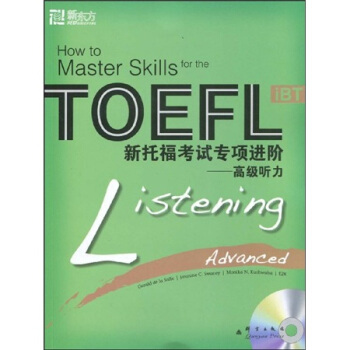




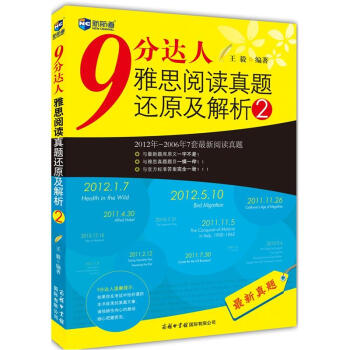


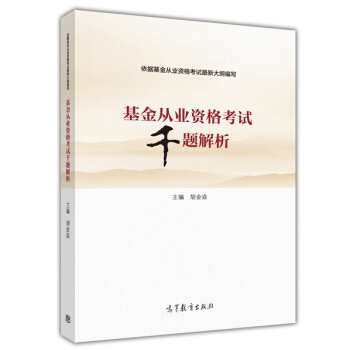

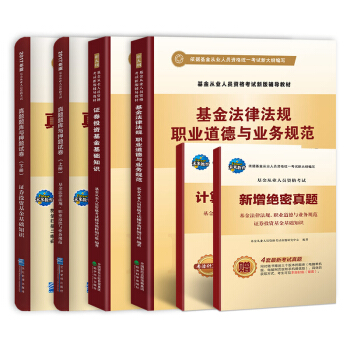

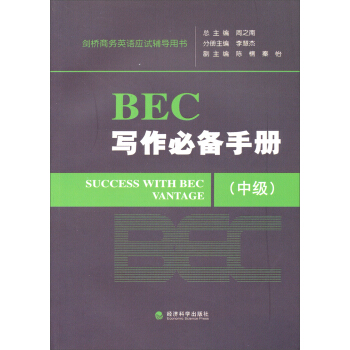
![剑桥商务英语应试辅导用书:BEC听力必备手册(中级)(附MP3光盘1张) [Success with Bec Vantage] pdf epub mobi 电子书 下载](https://pic.tinynews.org/10974126/rBEDilAOWucIAAAAAACroL11g1wAAFXSAPAVAIAAKu4124.jpg)
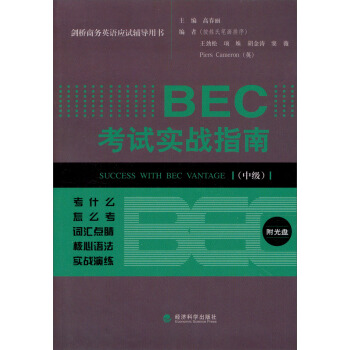
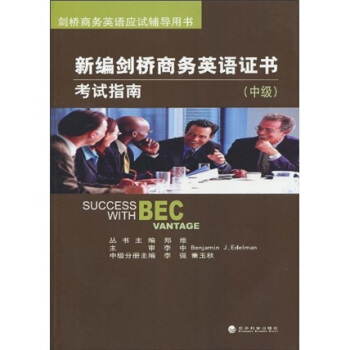
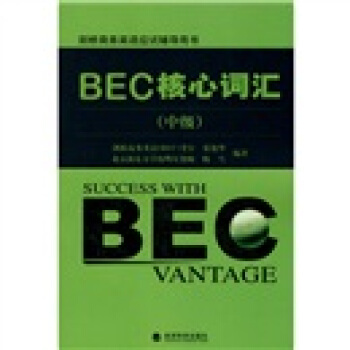

![新东方·剑桥雅思考试全真试题集8(附光盘) [Cambridge English IELTS 8] pdf epub mobi 电子书 下载](https://pic.tinynews.org/10583810/58097204N5eb90c75.jpg)
![新东方·剑桥雅思考试全真试题集7(附光盘) [Cambridge English IELTS WITH ANSWERS 7] pdf epub mobi 电子书 下载](https://pic.tinynews.org/10011407/541a4e37N5c040642.jpg)